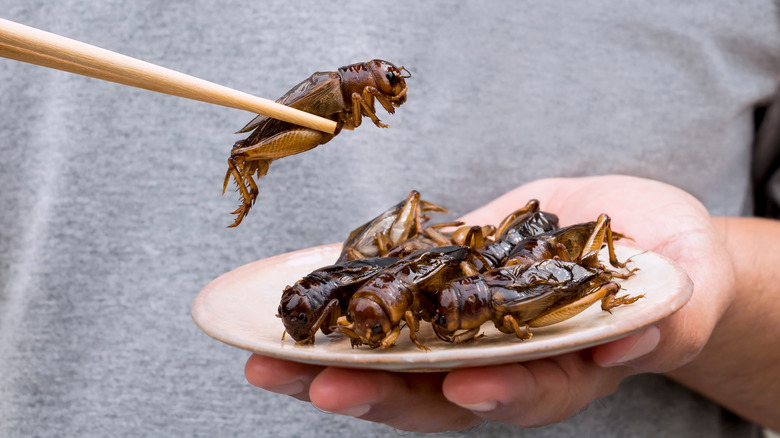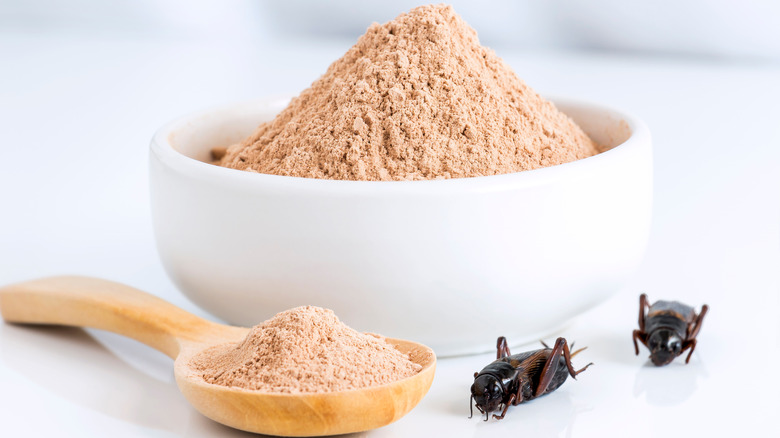Why Europeans May Soon Begin Eating More Insects
In 2017 the United Nations reported the world population was 7.6 billion and predicted to grow by about 83 million people each year, reaching 8.6 billion people in 2030, 9.8 billion in 2050, and 11.2 billion in 2100. Forbes reports that to keep up with the increasing number, food production will need to grow by 68% by 2050. To complicate matters, as the middle class grows, there is more demand for meat versus grains, legumes, and wheat.
A common food source in many countries, alternative protein options like insects are being explored on a global scale. According to Statista, the estimated market value of edible insects in 2018 was about $306.32 million and is expected to increase to about $1.2 billion by next year.
Following this necessary trend, in Europe crickets, mealworms, and grasshoppers were officially certified as safe to be eaten by humans in 2021 (via Bloomberg). And now another insect is joining that growing list.
A new insect option gets the E.U. green light
Europeans will have another option for insect protein after the European Food Safety Authority (EFSA) approved the lesser mealworm (Alphitobius diaperinus) for human consumption. Following the announcement, insect farming company Ÿnsect is set to begin ramping up production for the European market.
If you're wondering about the demand, OnePoll conducted a survey for Ÿnsect in April 2022 in the United Kingdom, United States, Netherlands, and France and learned that 57% of the 8,326 adults surveyed were willing to eat insects if the benefits were explained more. In addition, the survey revealed 96% of respondents had already eaten insects or insect protein and said they would consider it again.
But if you are picturing a Paris cafe serving mealworms on a white plate, think again. While the edible insects approved for sale in Europe can be sold in frozen, dried, and powdered forms, per Bloomberg, it's often the powdered form that is incorporated into products. (Cricket flour grasshopper pie, anyone?) For example, Ÿnsect's lesser mealworms can currently be found among the ingredients in a variety of foods produced by other companies or restaurants, like cereal bars, shakes, and burgers. Following the EFSA's official approval, it is likely the lesser mealworms will begin cropping up in more and more places.

